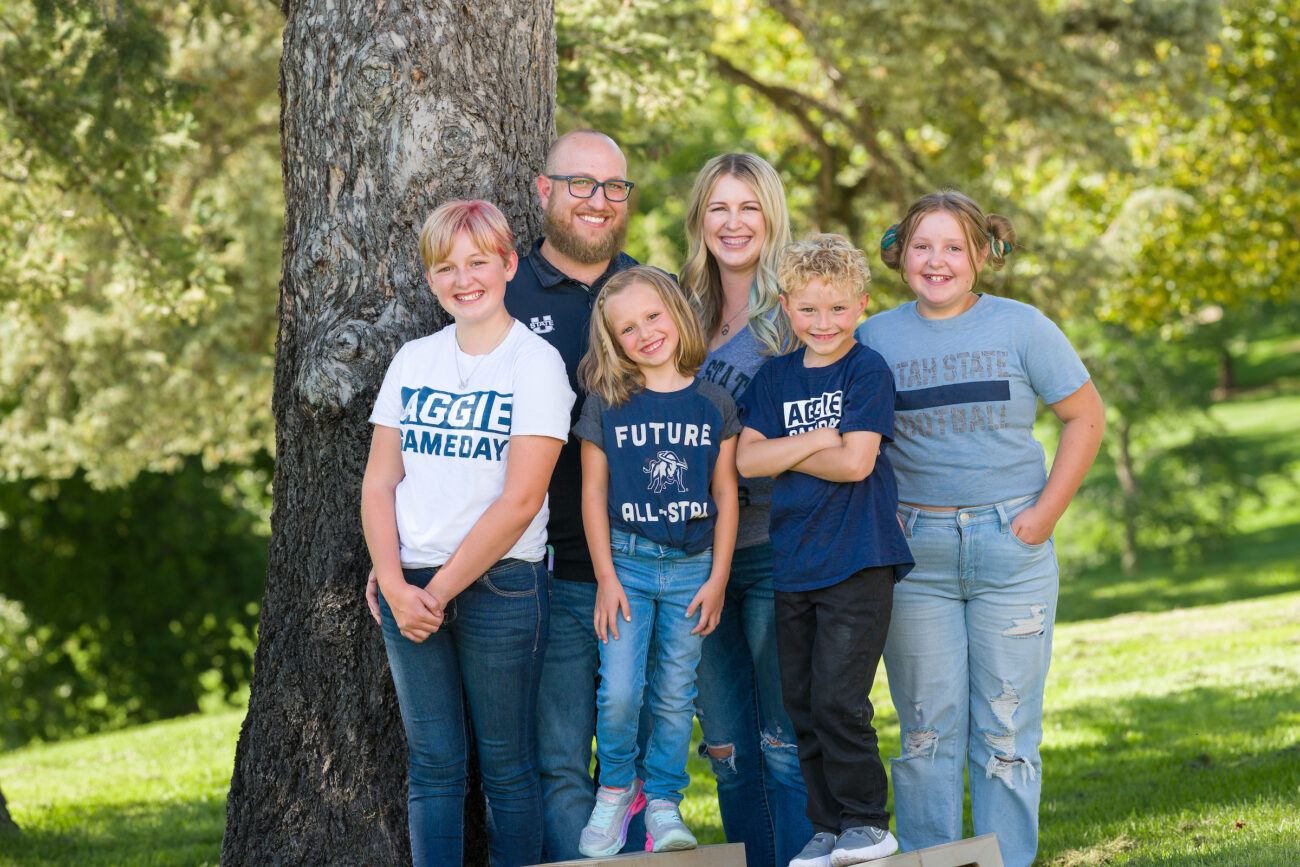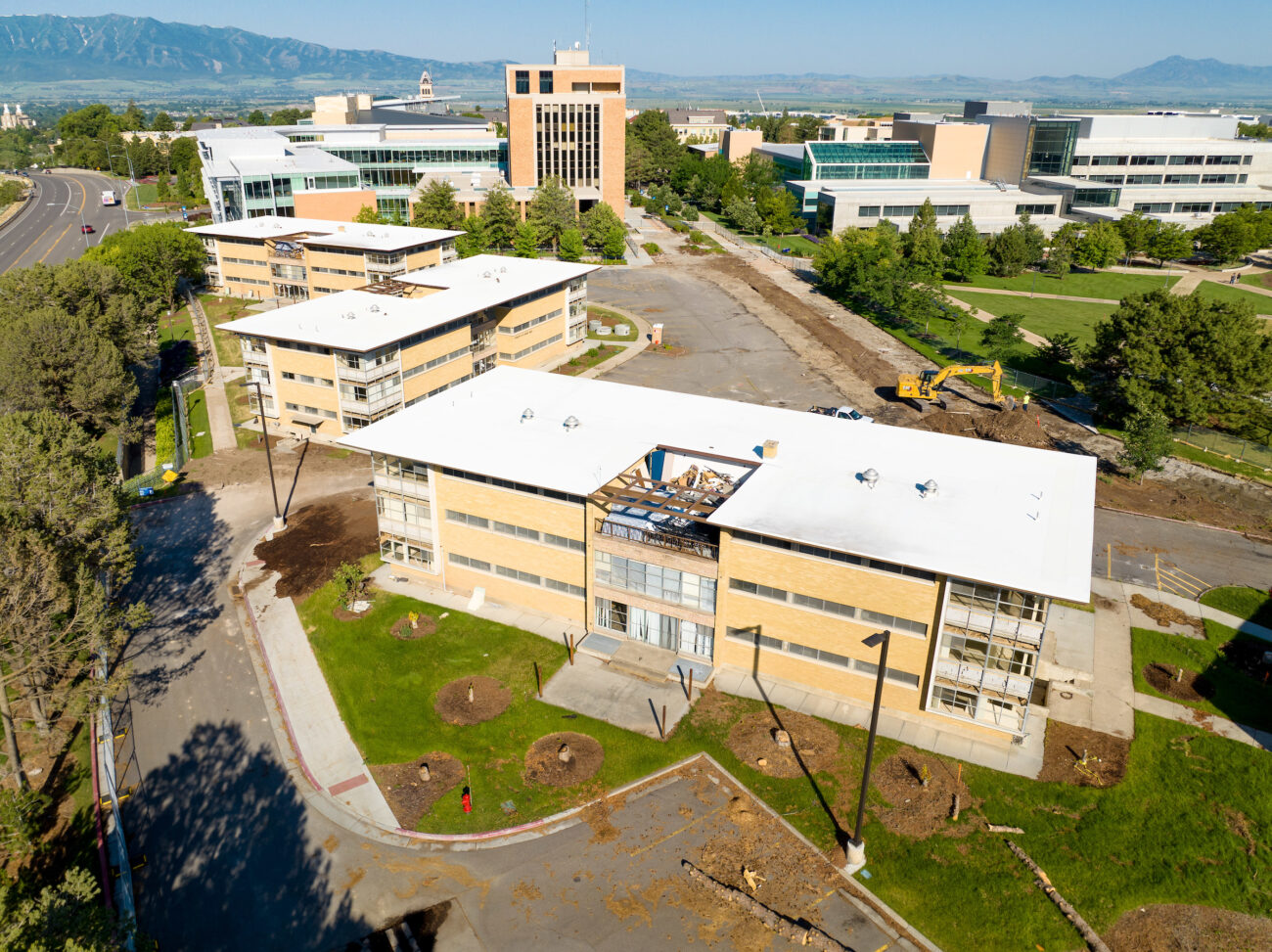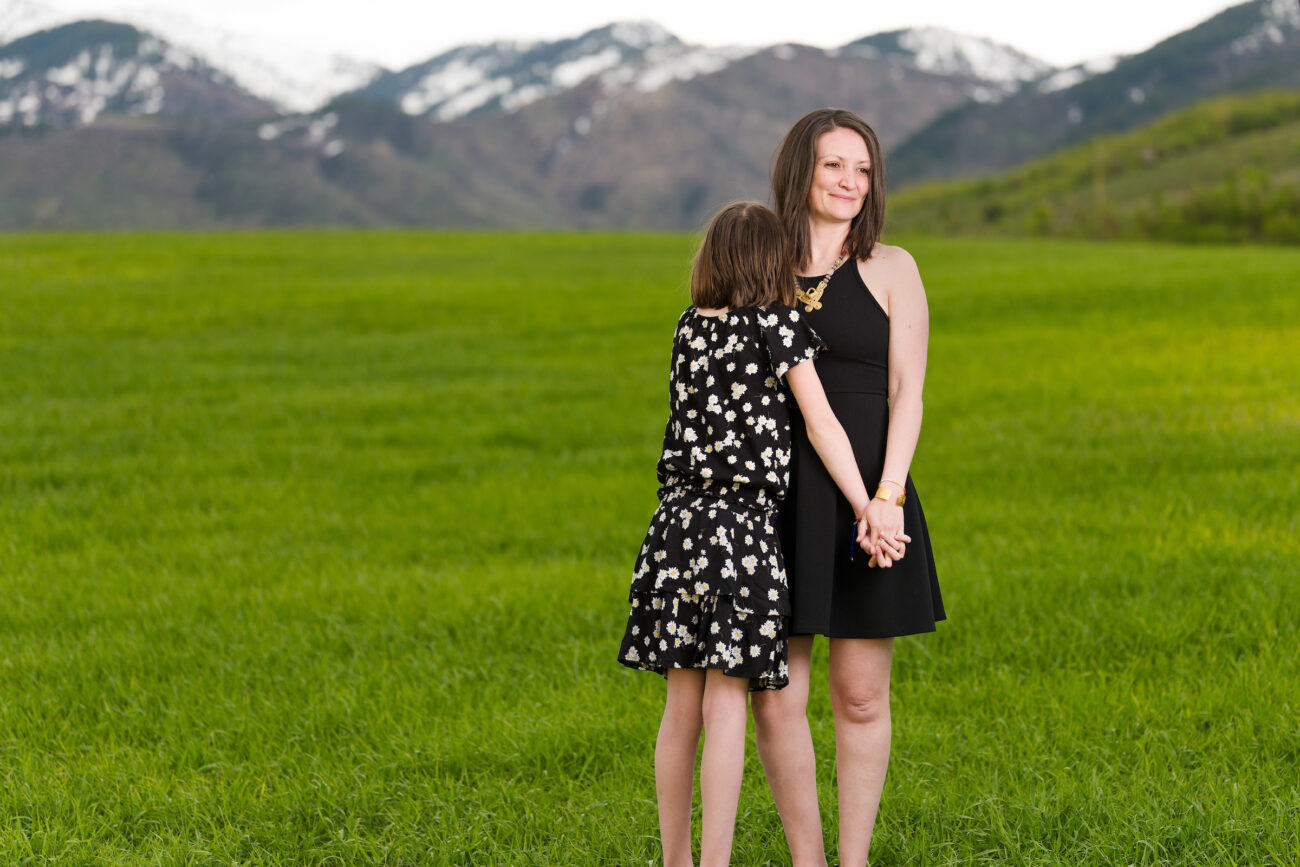Look Back: Adieu to the ‘Do
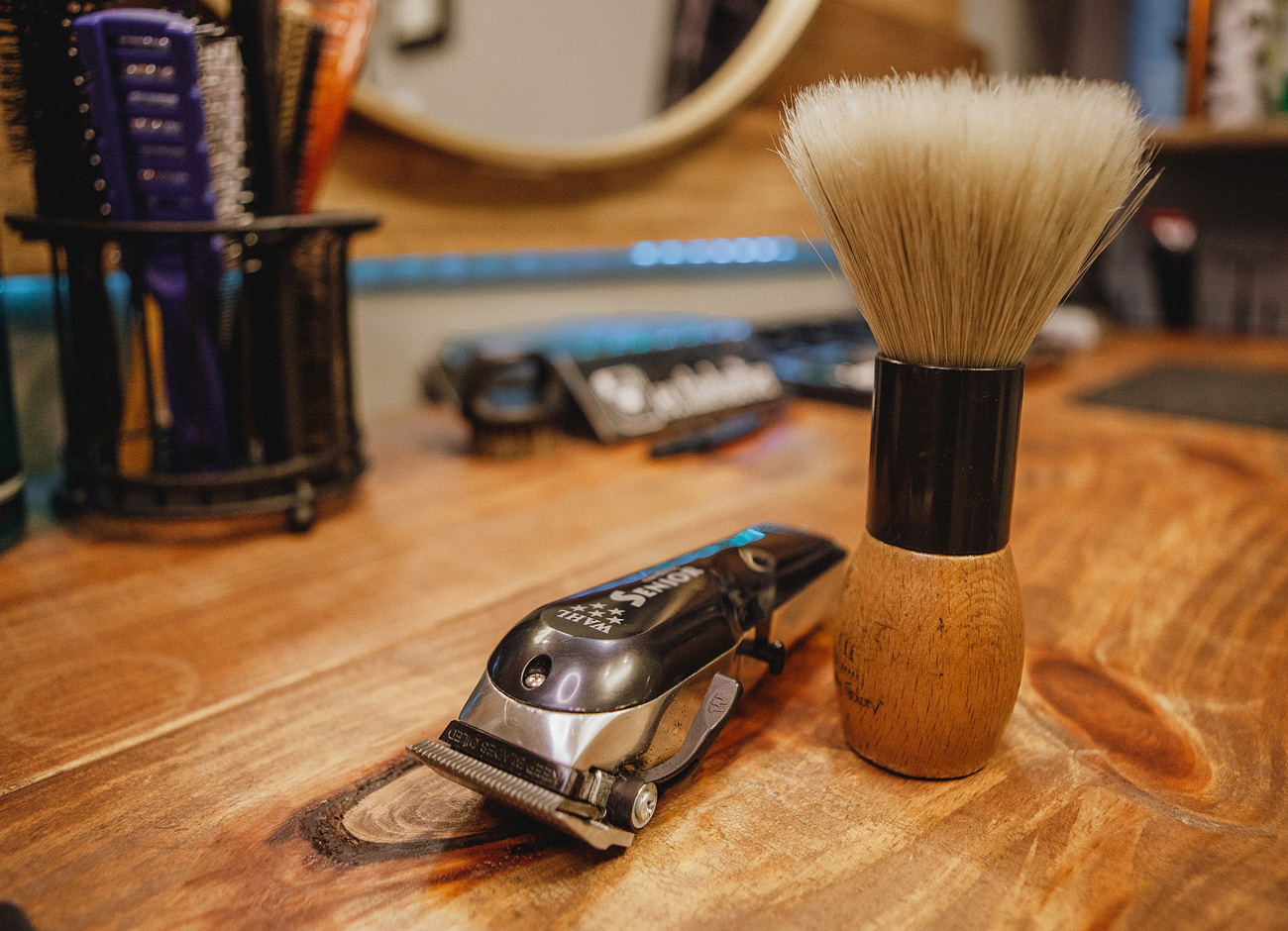
The Utah State Agricultural College Bulletin published in September 1954 focused its entire 20 pages on the notable amenities of the nearly new Student Union building, which combined services and shops previously found throughout the campus into one central facility.
Now known as the Glen L. Taggart Student Center, the Student Union first opened its doors in December 1952. Among the many conveniences located in the original 108,000-square-foot structure were a health center, bookstore, ballroom, soda fountain, camera shop, bowling alley, music listening room, and even a smoking lounge. There was also a three-chair barbershop, the addition of which was marketed in the USAC Bulletin as such:
Here you will find skilled tonsorial artists available to keep you looking neat and well-groomed in the classroom as well as for those out-of-class engagements. P.S. The gals are also welcome.
Seventy years later, “tonsorial artists” – a fancy word for barbers or hairdressers – are no longer found on the campus of Utah State University. The little barbershop famous for its map full of push pins marking the hometowns of its many customers closed its doors for good in December 2021.
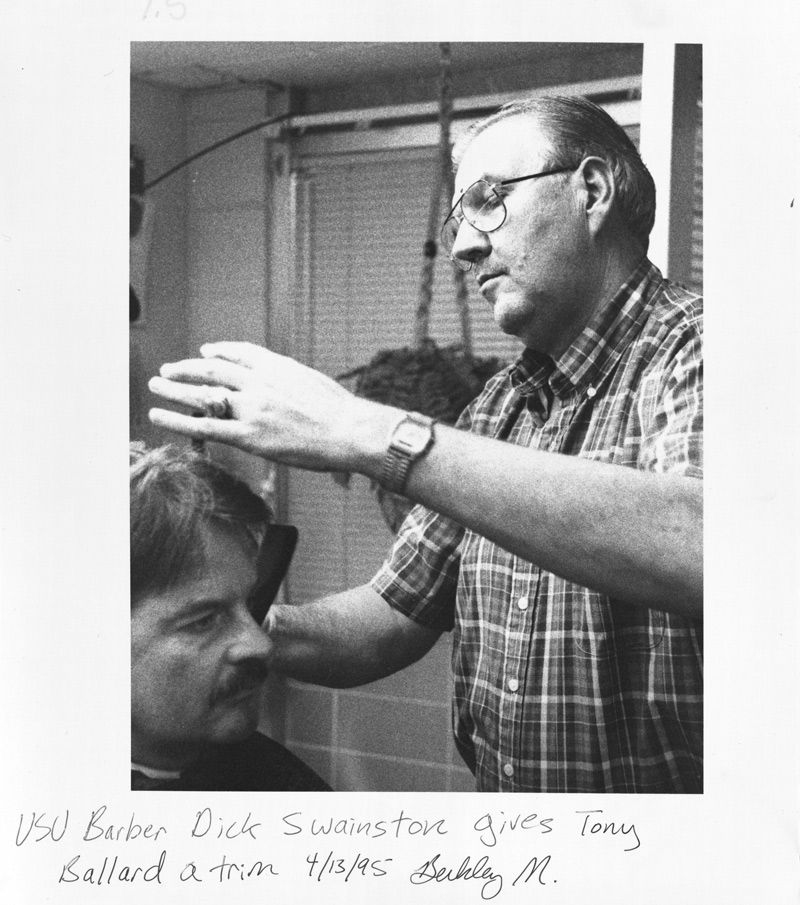
Business inside the narrow space, located on the south side of the hallway in between the USU Campus Store and the Student Media/Utah Statesman office, had fallen off in recent years, and the COVID-19 pandemic only made things more difficult. Ownership of the shop changed hands several times in the last decade, and when the latest owner was unable to sell the business to another party, she informed the university that she wouldn’t be renewing the barbershop’s lease agreement for 2022.
Afterwards, Ray Cheatham, who has served as the director of operations at the TSC since 2018, says “the university decided that it might be an opportunity for us to look and see if there was something else that could be done with that space to support the students.”
“And we started to do, more or less, a survey, to try and identify what they would like,” Cheatham explains. “There were some that indicated they wanted to still have a barbershop, but the vast majority were requests for other things. Ultimately, President (Noelle) Cockett decided to assign the space to Student Affairs and USUSA.”
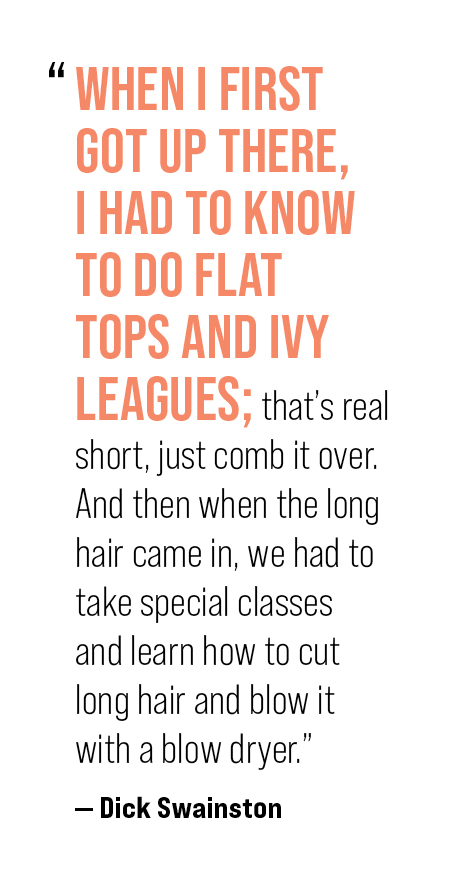
Known officially as TSC 120, the space is being renovated into an office for USUSA Student Event Services, which had been located on the third floor of the TSC. According to Student Events adviser Spencer Bitner, construction is scheduled to be completed in February 2023 followed by a grand opening in March.
“The space they currently use will be designated for use by Fraternity & Sorority Life,” Bitner adds. “This student group has been looking for a permanent space for some time, and we are excited for them to have their own designated space on campus.”
Prior to a major renovation of the Taggart Student Center in the 1980s, the barbershop was located further west near the current entrance to the Financial Aid offices. This is where barber Dick Swainston first came to the USU campus in 1965 at the urging of fellow barber LaMonte Hyde. The two commuted together from Preston, Idaho, during most of Swainston’s three-year stint at another shop in downtown Logan. At the time, the USU barbershop boasted three chairs and employed five full-time barbers and a part-time student apprentice. Swainston cut hair in the TSC until 2005.
“Those were good years,” Swainston says of his 40 years at USU.
Now 82 years old, Swainston is retired and wintering in St. George, rather than braving U.S. Hwy. 91 on a daily basis for a 51-mile, round-trip commute from Preston.
When he first started at USU, Swainston had the summers off because there weren’t enough classes to create foot traffic into the barbershop. But business picked up after a few years, especially after the Teton Dam disaster in Idaho in June 1976 led to an influx of “Sunbirds” to Cache Valley when Rexburg and Ricks College were unable to accommodate their annual visitation plans.
“That helped us keep going,” Swainston says of the Summer Citizen population. “That way we could have at least three, sometimes four of us in the summer. The summer got to be as good as the winter because of them.”
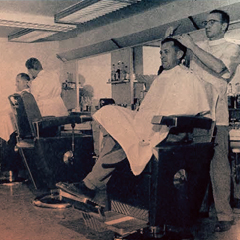
That’s a trend that continued right up until shop closed down, according to Cheatham.
“Last year, that’s probably who I got the most feedback and inquiries from was from Summer Citizens when they came up here for their classes,” he notes. “A number of people asked, ‘Where’s the barbershop? What happened to the barbershop?’”
During his tenure at USU, Swainston cut the hair of most of the university presidents, including Daryl Chase, Glen Taggart, and George Emert. Stanford Cazier had a brother who was a barber, so he naturally went to him instead, Swainston says. USU coaches and athletes sat in Swainston’s chair throughout the years, and he tried his best to talk to his customers about Aggie athletics rather than religion or politics.
“But it was definitely easier to do when the Aggies were doing good, and you didn’t want to be critical when they were doing bad,” he says.
Needless to say, Swainston also saw a lot of hairstyles come and go before selling what became known as Dick’s Barbershop in 2005.
“When I first got up there, I had to know to do flat tops and Ivy Leagues; that’s real short, just comb it over,” Swainston says. “And then when the long hair came in, we had to take special classes and learn how to cut long hair and blow it with a blow dryer. We actually had to learn how to do it in the later ‘60s and the first part of the ‘70s because if you didn’t, you went out of business because the customers started going to beauty shops.”
Swainston continues: “Then they went to bowl cuts. That was a bad time. I can’t see a college kid wearing a bowl cut because they look terrible. Little kids were alright, but they went through it. That’s what they wanted, and the customer’s supposed to be right.”



